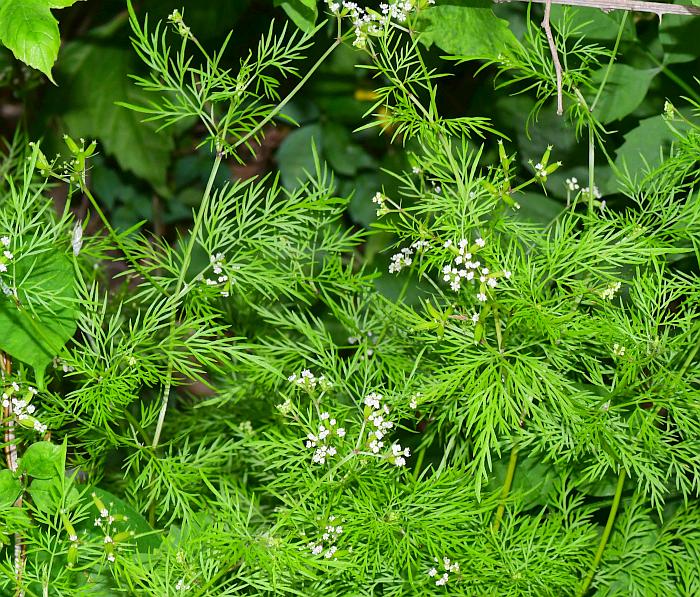Trepocarpus aethusae Nutt. ex DC.
Whitenymph

Native
CC = 7
CW = -5
MOC = 7
SRank = S1
© SRTurner
Trepocarpus aethusae Nutt. ex DC.Whitenymph | |
 |
Native CC = 7 CW = -5 MOC = 7 SRank = S1 |
© SRTurner |
|
Family - Apiaceae Habit - Annual forb. Stem - Ascending to erect, sometimes from a spreading base, to 60 cm, glabrous or nearly so.
Leaves - Alternate, short petiolate to sessile, highly dissected, glabrous. Sheathing bases not or only slightly inflated. Blades 3-12 cm long, ovate to broadly triangular-ovate in outline, 3 or 4 times pinnately compound or dissected, the ultimate segments 2-12 mm long, linear, narrowed or short-tapered to a sharp point at the tip.
Inflorescence - Inflorescences compound umbels, opposite the leaves or occasionally terminal, short- to more commonly long-stalked. Involucre of 2-4 bracts, these 2-12 mm long, linear, occasionally with a few linear lobes. Rays 2-4, 0.5-1.5 cm long. Involucel of 2-6 bractlets, these shorter than to longer than the flower stalks, linear.
Flowers - 2-8 in each umbellet, sessile or the stalks to 3 mm long, the umbellets thus sometimes appearing headlike. Sepals minute, narrowly triangular scales, unequal in length. Petals obovate, appearing shallowly notched, but narrowed or tapered abruptly to a short, slender tip, white. Ovaries glabrous.
Fruits - Fruits 8-10 mm long, linear to narrowly oblong in outline, slightly flattened laterally, glabrous, light brown to greenish brown, the mericarps with the 5 primary ribs inconspicuous and nervelike, but with 4 conspicuous, rounded, corky-thickened secondary nerves, these light tan to straw-colored.
Flowering - May - June. Habitat - Bottomland forests, sloughs, swamps, ditches. Origin - Native to the U.S. Lookalikes - None close. Other info. - This attractive little plant is rare in Missouri, being found in only a few counties in the far southern region of the state. It is state tracked, with a conservation ranking of S1 (critically imperiled). It is somewhat more common in states to our south, its U.S. distribution being largely confined to the south-central portion of the country. It is easily recognized by its frilly foliage and small umbels of white flowers atop relatively large ovaries. Its delicate, lacy foliage punctuated by small white flowers make it a good candidate for cultivation. Photographs taken at Otter Slough Conservation Area, Stoddard County, MO, 6-26-2019 and 6-10-2023 (SRTurner). |